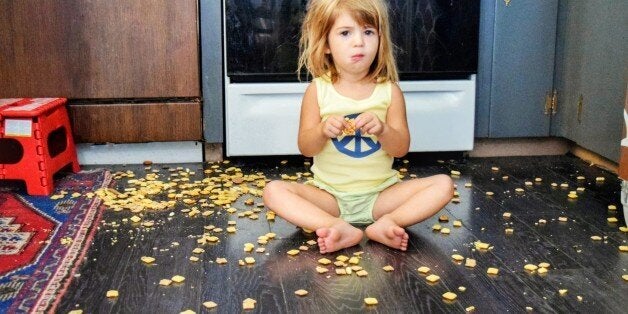
Have you ever wondered why your toddler does something, even when you've told them not to and explained why they shouldn't do it? Perhaps your two or three year old insisted on touching the oven door, even though you told him not to because it was very hot. Being told something and doing it yourself are two very different things. It is only when the child touches the oven door and experiences the heat that he truly understands and learns.
For parents, understanding the repetitive patterns in the behaviour of young children, particularly their play, can be very helpful, especially when the child is behaving in a way that could be deemed 'naughty'. The word 'Schemas' is used frequently amongst early years education and childcare professionals to describe these repetitive behaviours in general, however names are given to different patterns relating to specific behaviours, these include the following:
Connection Schema
In this schema children learn how to connect things together. They will often be engrossed in building train tracks, sticking building blocks together, or laying pieces of paper on the floor to make a path.
Containing Schema
The containing schema occurs when children place objects into a container of some form. For instance they may put all of their crayons into an empty bag, or inside a large box.
Enveloping Schema
In this schema children learn to cover things up. For instance they may cover their teddy bear with a blanket, or cover their food with a napkin.
Positioning Schema
In this schema children are learning about the positions of one object in relation to another. They will often move their food around to different positions on the plate, or may want to sit in a different position to the one they have been instructed.
Rotation Schema
This schema is all about objects rotating. Children may be engrossed by the washing machine or the motion of wheels turning. They will often try to turn things that they think may rotate, such as the hands of a clock or rolling a ball along the floor.
Trajectory Schema
The trajectory schema teaches children about movement and direction. They will often throw items to observe their trajectory, for instance food thrown from their high-chair or water thrown into the air.
Transforming Schema
In this schema the child is interested in changing properties of objects. They may pour their juice into their porridge and explore the resulting transformation with their fingers. Or they may pour sand from their sand pit into their hair, to feel the change in texture.
Transporting Schema
This schema is used to describe the action of children moving objects from one place to another. For instance moving cans stacked in a cupboard to a different area of the kitchen, or pushing a cart, containing building blocks, from one part of the garden to another.
Understandably many of these schemas can be problematic for parents. The child's learning is often at odds with social rules and expectations and can often be very messy! While parents would much rather their children didn't pour juice in their dinner, empty a packet of baby wipes and put them all into the toilet bowl, or rearrange the contents of their kitchen cupboard, they can rest assured that not only is this behaviour normal. It is indicative of great learning
This is a small excerpt from my new discipline book. It is available now under the title 'The Gentle Discipline Book' in the UK and under the title 'Gentle Discipline' in the USA and Canada in the summer. The book covers common tricky behaviours from babyhood right the way through to the teen years and how to cope with them in a gentle and effective way